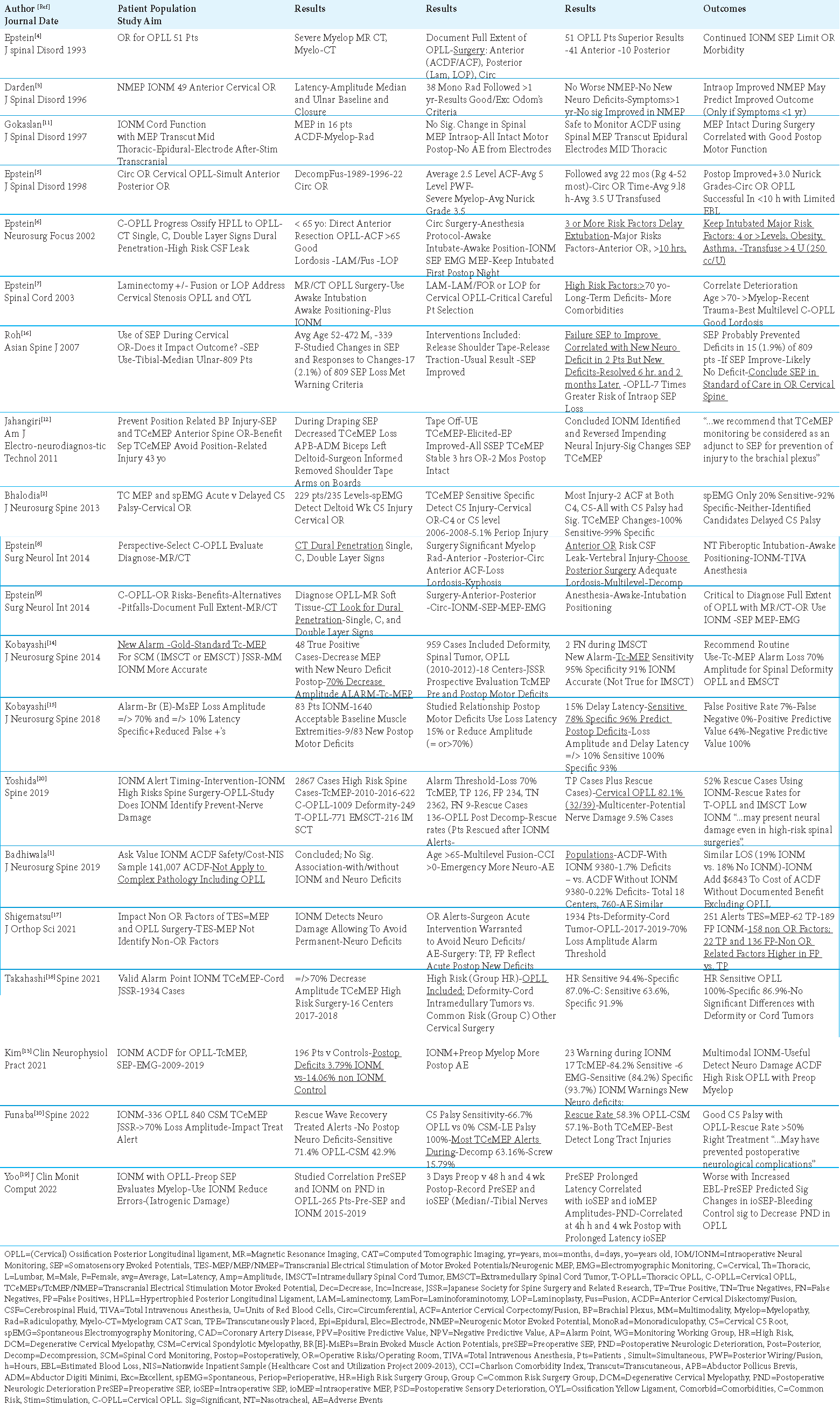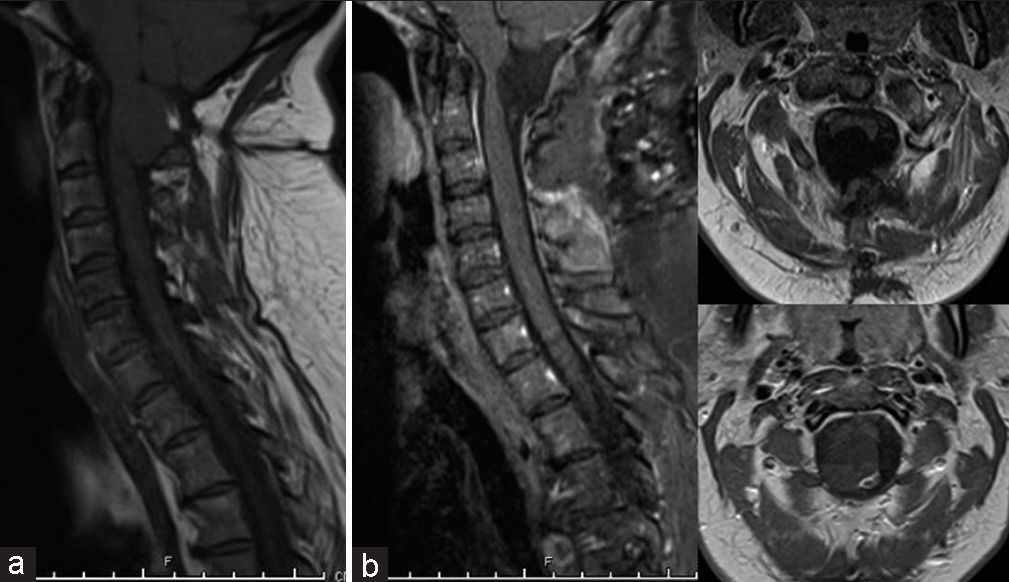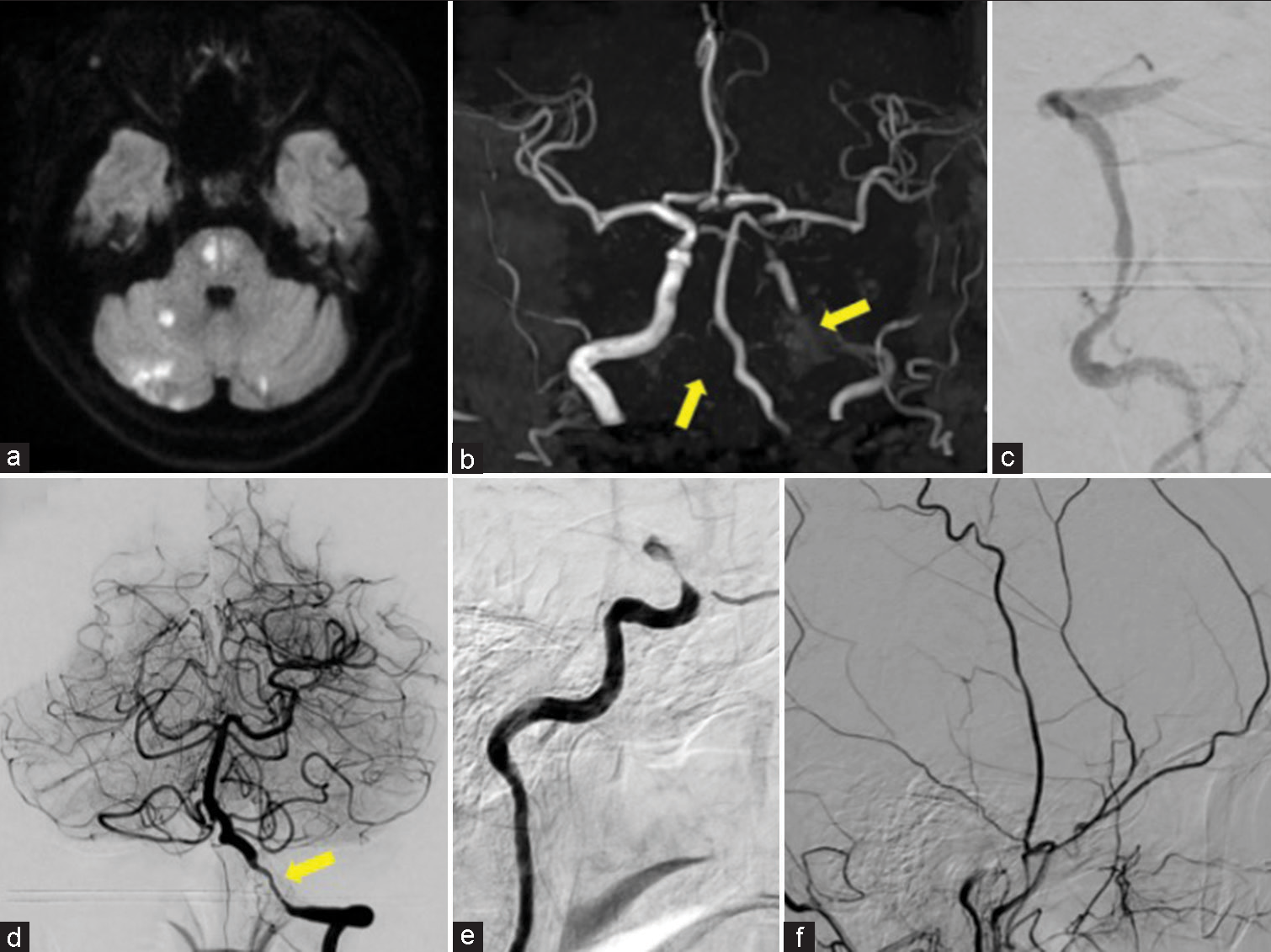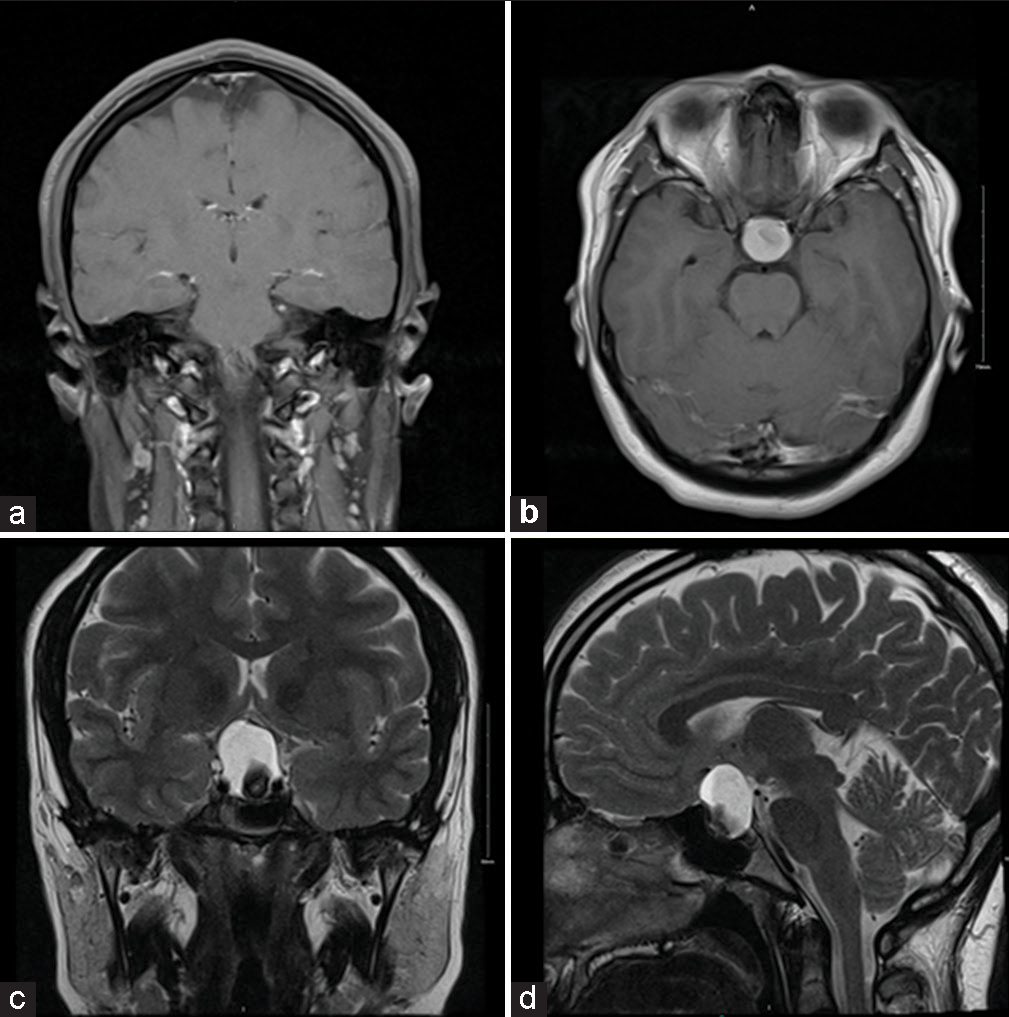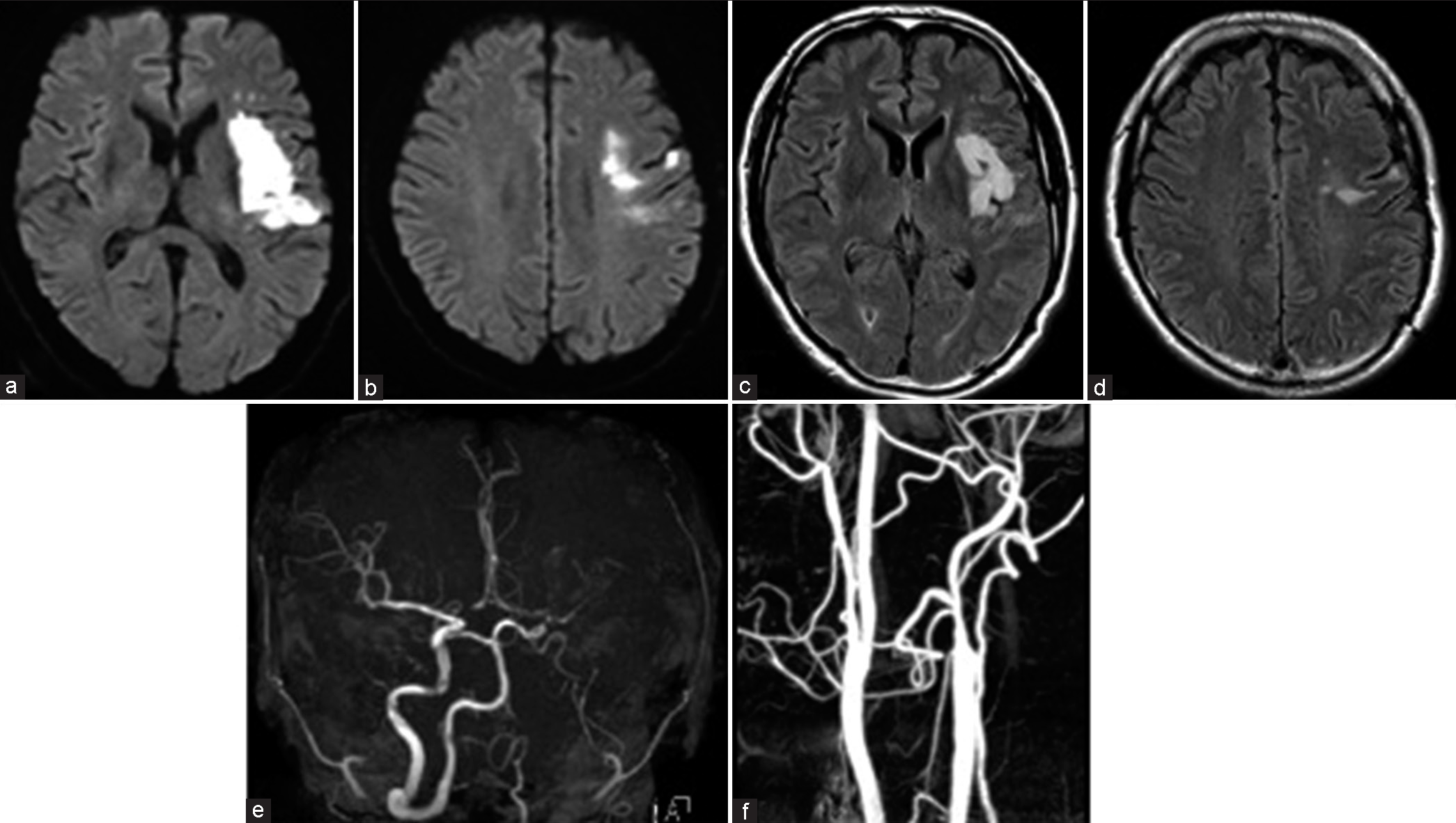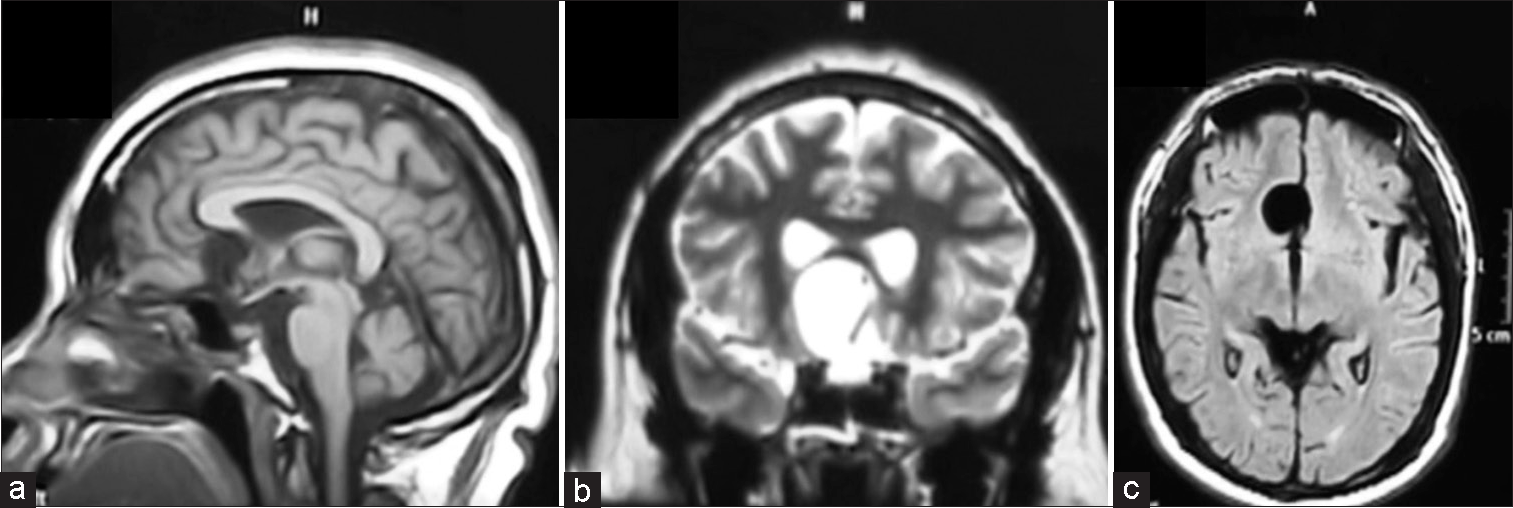Perspective: Triple intraoperative neurophysiological monitoring (IONM) should be considered the standard of care (SOC) for performing cervical surgery for ossification of the posterior longitudinal ligament (OPLL)
Date of publication: 15-Sep-2023
Background: Triple Intraoperative Neurophysiological Monitoring (IONM) should be considered the standard of care (SOC) for performing cervical surgery for Ossification of the Posterior Longitudinal Ligament (OPLL). IONM’s three modalities and their alerts include; Somatosensory Evoked Potentials (SEP: =/> 50% amplitude loss; =/>10% latency loss), Motor Evoked Potentials (MEP: =/> 70% amplitude loss; =/>10-15% latency loss), and Electromyography (loss of EMG, including active triggered EMG (t-EMG)).
Tenth-anniversary Glasgow Neuro Society 2022 conference proceedings
Date of publication: 15-Sep-2023
Cervicomedullary junction mature teratoma with pulmonary differentiation and diastematomyelia in an adult – A rare case
Date of publication: 15-Sep-2023
Background: Intradural extramedullary teratomas in the cervical or cervicomedullary region are rare in adults.
Primary thoracic intramedullary spinal cord tumor with likely metastases of glial origin to the lumbosacral vertebrae: Illustrative case
Date of publication: 15-Sep-2023
Background: Metastasis of systemic neoplasms to the spine is common; however, the metastasis of primary spinal cord tumors to other regions in the body is an infrequent occurrence. A few case reports have described the metastasis of primary spinal cord tumors, and in most cases, patients were younger than 30 years of age.
Giant cell arteritis with severe intracranial involvement diagnosed and treated early
Date of publication: 15-Sep-2023
Background: Ischemic cerebrovascular accidents (CVA) occur in 3.3–7.2% of patients with giant cell arteritis (GCA), and intracranial vessels are rarely affected. We, herein, report a case of intracranial GCA with rapidly progressive multiple intracranial vascular lesions.
Xanthogranuloma of the suprasellar region mimicking cystic craniopharyngioma: A case report
Date of publication: 15-Sep-2023
Background: Xanthogranuloma of the sellar region is an extremely rare benign entity with only case reports and series documented in the literature. We aim to describe in this report a case of a suprasellar xanthogranuloma that was diagnosed initially as a cystic craniopharyngioma.
A case of temporary occlusion of donor artery after secondary generalized seizure in a patient with superficial temporal artery-middle cerebral artery bypass
Date of publication: 15-Sep-2023
Background: To prevent stroke recurrence, a superficial temporal artery-middle cerebral artery (STA–MCA) bypass for atherosclerotic cerebrovascular occlusive disease is performed. Post stroke epilepsy is known as serious sequelae of stroke. Herein, we present a case of a 60-year-old man who underwent STA–MCA bypass for the prevention of stroke recurrence; however, the donor artery was deemed to be temporally occluded secondary to generalized seizure.
Analysis of the timing and the usage of drains following cranioplasty on outcomes and the incidence of bone resorption
Date of publication: 15-Sep-2023
Background: Pediatric cranioplasty is associated with a high rate of complications, including bone resorption (BR) in 20–50% of cases. We aimed to evaluate factors contributing to BR, including the effect of the timing of cranioplasty and the use of post-surgical drains.
Microsurgical and endoscopic-assisted supraorbital keyhole approach for intra-suprasellar cysticercosis
Date of publication: 15-Sep-2023
Background: Treatment for intra/suprasellar cysticercosis can be challenging and may result in visual disturbances if not managed properly. Despite its limited knowledge, an effective surgical option exists to treat this condition. This article presents three cases of sellar cysticercosis, comprising one female and two male patients, managed with microsurgical supraorbital keyhole approach (mSKA) and endoscopic-assisted supraorbital keyhole approach (eaSKA).
Sellar colloid cyst: Peculiar radiological characteristics of a common lesion at an uncommon location
Date of publication: 15-Sep-2023
Background: Colloid cysts, common benign lesions of the third ventricle, have rarely been reported in uncommon extraventricular locations such as the pituitary fossa. Even in the sellar region, it is usually seen between the anterior and posterior pituitary lobes (pars intermedia).


